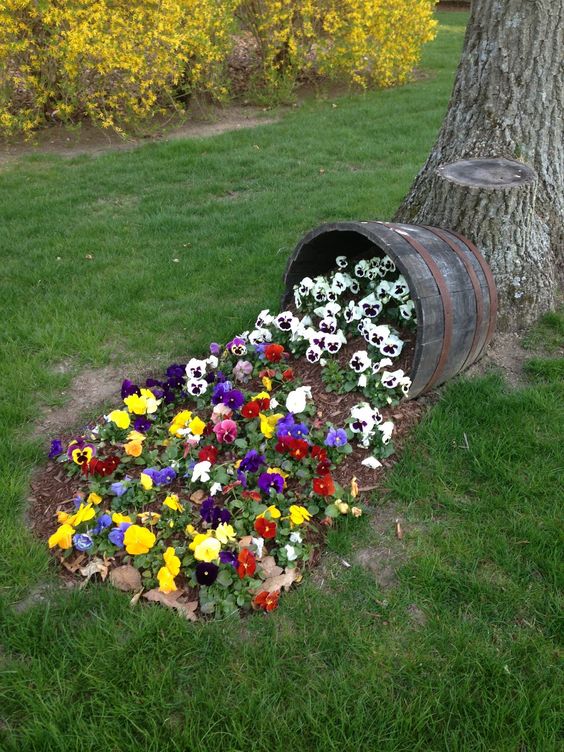
Pruning fruit trees: how and when to prune fruit trees and shrubs?
Content
Regular pruning of shrubs and fruit trees affects not only the overall aesthetics of the garden, but also the health and condition of plants. With proper care, they will be characterized by lush and beautiful growth and a quality harvest. In this article, you will learn how and when to prune fruit trees and shrubs.
Regular pruning of shrubs and fruit trees - why is it so important?
We can say that an uncut tree or shrub "lives its own life" - it grows in different directions, which affects the constant thickening of the crown. Theoretically, the thought of lush branching may sound positive: it would seem that this is a sign of good, healthy plant growth. However, in practice, too high a density of branches adversely affects the yield. Due to the lack of room to grow and limited access to light, the fruits will grow smaller, inferior in quality (with less intense flavor and color), and less frequent.
Pruning treatment of fruit trees and shrubs is also important for their health. So it can be called concern. Firstly, the crown is given the desired shape (chaotic branching turns into an aesthetic circle, for example), and secondly, all diseased, very old or pest-affected branches are removed.
When to prune fruit trees?
When thinking about the optimal time for pruning fruit trees, always consider the effect that the procedure will bring: it will stimulate them to grow. You should definitely refrain from such care work in the autumn. Why? Although many trees are harvested at that time, once harvested, the plants will prepare for the winter season. Pruning them in the fall, unfortunately, can lead to freezing. So - when to prune fruit trees? Suitable seasons:
- Early spring - when the snow slowly begins to melt and the temperature is already several degrees above zero, and the calendar page changes from February to March, it's time to make a winter cut of apple, pear and plum branches. Although the name itself suggests pruning in the middle of winter, it is worth refraining from pruning in December or January, and also when the risk of returning frosts is still high. They can expose trees to frost. Also in February, when the return of winter is announced for March, it is better to wait a bit - preferably until the actual arrival of early spring.
- SPRING - the sun rises more often, the temperature fluctuates from a few to ten degrees, and a cold day is primarily rainfall - which means that in the spring it is time to cut down fruit trees. Focus on those plants that are extremely resistant to cold temperatures: apricots, nectarines, peaches and plums. When? Preferably late March or early April.
- Lato - summer pruning involves two situations: either for re-pruning trees that you cultivate in early spring, or for the sole pruning of specific species. In the first case, it will be the aforementioned apple, pear and plum; the second care can be performed between July and August. At the same time, take care of the first pruning of fruit trees that are extremely resistant to low temperatures: cherries and sweet cherries (after harvesting).
How to prune fruit trees?
Regardless of the type of tree and season, pruning is the same. Its types are divided according to the type of care. So first think about what effect you want to achieve: are you going to prune fruit trees to give the crown the desired shape, or do you want to let more light into it for better yields?
In both cases, start by finding and removing old, dry, diseased, and pest-infested branches (sanitization or rejuvenation). Notice both the shoots and branches of the tree. You will definitely need a good pruner - both short, for working with branches that are at your fingertips, and long, with a telescopic handle. It is worth choosing a universal model that is well suited for both trees and shrubs.
When you are primarily concerned with adjusting the shape of the canopy, properly cut the stems to their length and completely cut out those that completely distort the appearance of the tree, grow down or intersect with others. Such a cut is made on average once every 1-2 years.
Translucent pruning, of course, will consist in removing the oldest shoots and those that block light from entering the crown. The purpose of this pruning is to make the branches lighter and looser.
How to prune young fruit trees?
We mentioned that the type of the tree doesn't matter, but there is one exception to this "rule". This applies to the first pruning of young fruit trees. They are made immediately after placing the seedling in the ground. Although the pruning method will depend on the type and condition of the tree, the general rule is to cut the branches at least halfway - the worse the quality of the shoots, the more they should be removed. This is a very important process - the first cut has a positive effect on the rooting of the tree and its resistance to difficult weather conditions.
When to prune fruit bushes?
The frequency of pruning bushes is the same as trees - the work should be repeated every year. And until what date? Again, it depends on the species:
- Early spring - during this period, currants and gooseberries should be cut mainly, preferably between the second half of January and the end of March. It is worth keeping in mind the possible repetition of frosts and suspend work until the arrival of a "real" early spring, if we have such an opportunity. It is definitely better to do this much closer to the beginning of spring than farther!
- SPRING - in the period from March to mid-April (i.e. early spring), take care of the branching of the blackberry.
- Lato – the first cut will not be for any species. The second must be done for currants, gooseberries and blackberries, preferably from July to August.
- autumn - raspberries love autumn! When pruned between September and the end of November, it will certainly produce more satisfying fruit.
How to prune fruit bushes?
In their case, the degree of branching will again affect the quality and size of the crop. The breed also matters - the shoots of some shrubs will most intensively produce a crop at the age of 2-6 years, and others - at the age of 3-5 years. In any case, however, it is worth regularly getting rid of the excess of the most fruitful branches - if only to gently lighten the bush and not allow more hidden shoots to block the access of light. Of course, it is always worth leaving at least a few older and older ones, but these should not prevail. Taking into account, for example, blackcurrant, it is worth leaving about 4-6 of the strongest young shoots and 3-5 older (2 or 3 year old) shoots. In turn, red currants and gooseberries require, first of all, the removal of weak and damaged shoots, because the youngest bear little fruit. Raspberries are best on two-year-old twigs. The old ones will be much less efficient.
Therefore, pruning fruit trees and shrubs is a horticultural work, which, of course, should be given special attention. It is worth getting acquainted with the species being bred in order to choose the right care for it, as well as to focus on quality products. Assemble your kit and get your plants ready for next season! You can find more tips on AvtoTachki Passions in the section I Decorate and Decorate.
/ Alexander Rats

